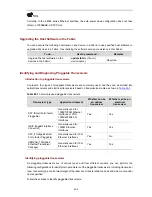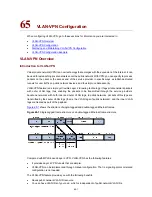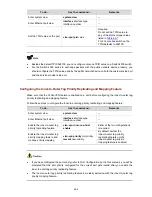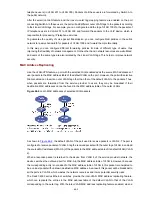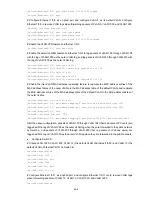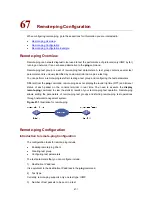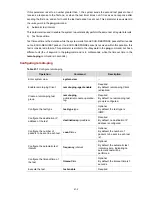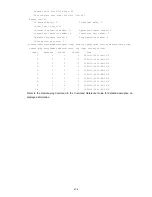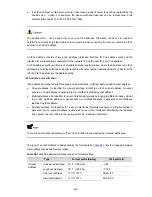
# As the devices in the public network are from other vendors, only the basic principles are introduced
here. That is, you need to configure the devices connecting to Ethernet 1/0/12 of Switch A and Ethernet
1/0/22 of Switch B to permit the corresponding ports to transmit tagged packets of VLAN 1040.
Data transfer process
The following describes how a packet is forwarded from Switch A to Switch B in this example.
1) As Ethernet 1/0/11 of Switch A is a VLAN-VPN port, when a packet from the customer’s network
side reaches this port, it is tagged with the default VLAN tag of the port (VLAN 1040).
2) The TPID value of the outer VLAN tag is set to 0x9200 before the packet is forwarded to the public
network through Ethernet1/0/12 of Switch A.
3) The outer VLAN tag of the packet remains unchanged while the packet travels in the public network,
till it reaches Ethernet1/0/22 of Switch B.
4) After the packet reaches Switch B, it is forwarded through Ethernet1/0/21 of Switch B. As the port
belongs to VLAN 1040 and is an access port, the outer VLAN tag (the tag of VLAN 1040) of the
packet is removed before the packet is forwarded, which restores the packet to a packet tagged
with only the private VLAN tag and enables it to be forwarded to its destination networks.
5) It is the same case when a packet travels from Switch B to Switch A.
65-7

